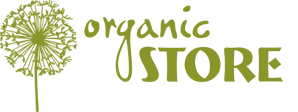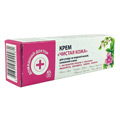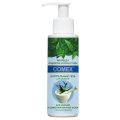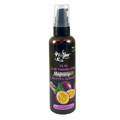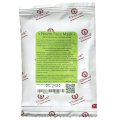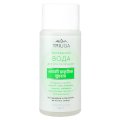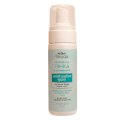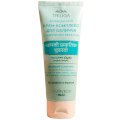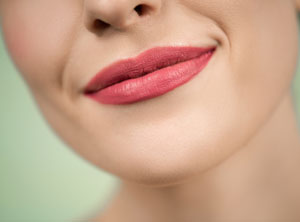 Although a lot of people think that pimples and breakouts are primarily a teenage problem, adults can have them too. Pimples on the chin are especially common because the skin on this part of your face is thicker and has more sebaceous glands. How to get rid of pimples on your chin? Here are a few tips that might come in handy.
Although a lot of people think that pimples and breakouts are primarily a teenage problem, adults can have them too. Pimples on the chin are especially common because the skin on this part of your face is thicker and has more sebaceous glands. How to get rid of pimples on your chin? Here are a few tips that might come in handy.
Chin pimples generally have the same causes as other kinds of pimples and breakouts. However, there are a few specific factors that come into play here. Firstly, due to the skin on the chin being thicker than elsewhere on the face, the pores here tend to get clogged with excess sebum and dirt more often, which creates a breeding ground for pathogenic bacteria that cause inflammation.
Secondly, as we’ve already mentioned above, the skin of the chin and the rest of the T-zone has a lot of sebaceous glands, which means that it produces more sebum (skin oil) than the skin on other parts of your face. An excessive production of sebum often results in clogged pores and inflammation, leading to breakouts.
Thirdly and finally, mechanical impact on the skin of the chin also increases the risk of pimples. We often touch the chin with out hands during the day. In addition, the skin of the chin may rub against high collars or medical masks (the latter has been especially relevant during the past few years because of COVID precautions), which creates suitable conditions for pathogenic bacterial growth.
To figure out how to get rid of pimples on your chin, you need to understand why and how they appear. The sebaceous glands, which are numerous on the chin, produce sebum, a special substance that consists of triglycerides, wax esters, fatty acids and squalene. Sebum helps to keep the skin hydrated and forms a protective mantle against bacteria and viruses. Normally, the skin produces exactly as much sebum as it needs.
However, if for some reason the sebaceous glands produce too much sebum, their ducts may get clogged with excess sebum, dead skin cells, and dirt. This creates a growth medium for various kinds of bacteria, including Cutibacterium acnes, which is linked to the skin condition of acne.
Depending on the intensity of the inflammatory process caused by bacteria, there are several types of chin pimples, and their treatment should be approached in different ways. For example, single superficial papules, i.e. small pimples containing no pus, usually don’t require any specific treatment. All you need to do is apply a topical anti-inflammatory product and wait until it works its magic.
Pimples that are filled with pus are called pustules. Pustules can be superficial or deep. Superficial pustules are usually almost painless. They don’t normally leave marks on the skin after healing. Deep pustules usually hurt and can leave scars. Superficial pustules can be treated with over-the-counter anti-inflammatory products, like papules. If you need to get rid of deep pustules, you should consult a dermatologist and maybe also an endocrinologist.
Large deep pustules are called nodules. They feel firm when you touch them (which you shouldn’t do, by the way) and hurt even when you don’t touch them. The emergence of nodules indicates a very intensive inflammatory process, which you shouldn’t try to treat yourself without consulting a dermatologist.
So what to do if you have pimples of your chin? Let’s start with the things you shouldn’t do because they will make your breakout worse. Picking and squeezing is a big no-no because it can lead to skin damage and acne scars. In addition, squeezing your pimples can make the infection penetrate into the deeper layers of the skin, making things even worse.
You also shouldn’t use face scrubs when your skin is inflamed or damaged because any kind of mechanical impact will aggravate the problem. You also shouldn’t apply ethanol-based products to your pimples because they will strip your skin of moisture and natural protection against pathogenic microbes.
What can really help? As we’ve already said, small superficial papules and pustules on the chin do not require specific treatment. To get rid of them, use anti-inflammatory and soothing topical products with benzoyl peroxide, salicylic acid, zinc, niacinamide (vitamin B3), panthenol, bisabolol, retinoids, and azelaic acid.
Your skin also needs thorough cleansing twice a day, in the morning and in the evening. However, you should keep in mind that thorough cleansing does not mean using harsh products. Opt for a mild cleanser with a sulphate-free formula. You also need to make sure that your skin is properly hydrated and use lightweight moisturisers that are free of comedogenic ingredients.
After getting rid of pimples on the chin, you should take proper care of your skin to prevent their re-emergence. Make sure that you use products that are specifically designed to take care of oily, combination, and problem skin. They are formulated with anti-inflammatory, antibacterial, soothing, moisturising, and regenerative ingredients. Your skincare products also shouldn’t contain any ingredients that might cause skin irritation or inflammation.
